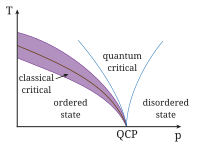Condensed matter

Condensed matter refers to the study of how tiny things like atoms and molecules come together to make up big things like materials we use in our everyday lives. Think of it like building with Lego blocks. Individually, the blocks are small and simple, but when we put them together, they can create complex and interesting structures like a castle or a spaceship.
Scientists who study condensed matter want to understand how and why these blocks come together and interact with each other. They want to know how the properties of the individual blocks affect the properties of the larger structure. For example, if we have a bunch of Lego blocks made of different materials, how will they behave differently when we put them together? Will the larger structure be stronger, weaker, or more flexible?
In condensed matter, scientists also study how these larger structures behave in different conditions, like temperature and pressure. For example, if we have a castle made out of Lego blocks, what happens if we put it in the freezer? Will it become more brittle and breakable? Or what happens if we put it in a vacuum chamber? Will it behave differently because there is no air around it?
Overall, the study of condensed matter helps us understand the building blocks of our world and how they come together to create the materials we use in our everyday lives.
Scientists who study condensed matter want to understand how and why these blocks come together and interact with each other. They want to know how the properties of the individual blocks affect the properties of the larger structure. For example, if we have a bunch of Lego blocks made of different materials, how will they behave differently when we put them together? Will the larger structure be stronger, weaker, or more flexible?
In condensed matter, scientists also study how these larger structures behave in different conditions, like temperature and pressure. For example, if we have a castle made out of Lego blocks, what happens if we put it in the freezer? Will it become more brittle and breakable? Or what happens if we put it in a vacuum chamber? Will it behave differently because there is no air around it?
Overall, the study of condensed matter helps us understand the building blocks of our world and how they come together to create the materials we use in our everyday lives.
Related topics others have asked about:
